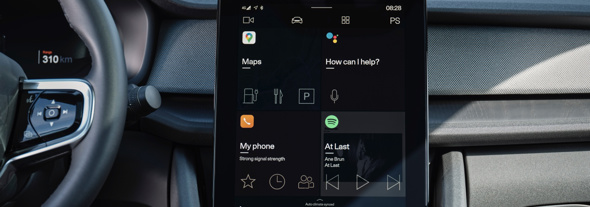Opinion article published in AutoDrive Magazine March 2022.
With Android Automotive this is already possible. This is a complete operating system responsible for everything that happens in the car, from the moment we turn it on, through the use of air conditioning or the use of applications such as Spotify or Google Maps. This is, by the way, the big difference in relation to Android Auto, a system that needs an Android Smartphone to work and does not have access to the car's functions, controlling only the applications running on the phone; is an application to replicate the Android device's screen on the vehicle's Dashboard. Meanwhile, Android Automotive works as a kind of four-wheel smartphone.
To clarify it better, I make the following comparison: this system is practically what Windows is for a PC. Instead of working on a mobile phone, tablet or even a TV, it appears in a vehicle, but cannot be installed by drivers. The only way to get it is to buy a new car that has the operating system preloaded. Google, responsible for the system, is partnering with car manufacturers, by pre-installing Android Automotive on its main units, directly from the factory.
The first vehicle to support Android Automotive was the Polestar 2, followed by the Volvo XC40 Recharge. But the market is growing. Google has already made deals to expand to other brands such as Ford, General Motors and the Renault-Nissan-Mitsubishi-Alliance. Honda recently announced that it will also adopt the platform starting next year.
Volvo XC40 Review by Razão Automóvel
Users will interact with Android Automotive via a touchscreen, typically in the center of the dashboard. However, manufacturers will have a certain freedom of choice to define a different location where they can consult the car's infotainment system applications; and even to present a more robust visual system where the information can be presented and go through different dispositions. This more robust display I speak of, is called Cluster Display. Through this technology, the Android Automotive system allows a presentation of information in clusters where we can see the information on different monitors. More frontal displays to the user, as is the case where the speedometer is normally found, where information such as navigation directions can be displayed; and others less focused on the driver, such as Media Apps (music applications, podcasts, news...) or applications that involve more information, such as nearby Points of Interest, which, being a driver's distraction, presented in a place with less access to its direct visibility.
Driver safety is another advantage of Android Automotive. Audio will be the main content to be consumed, for example through the so-called Media Apps. In addition, the system can identify if the car is moving. Access to various vehicle information will also be available - such as consumption, tire pressure or speed - which makes imagination and innovation gain space.
From the software development point of view, we find one more advantage: the Android technological stock that we know can be used, making it possible to use everything that the ecosystem offers both in Java and Kotlin. And if we want, we can still use Xamarin Android. The possibilities of migrating existing apps are in fact an asset and something that the development market will not ignore.
In addition to the standard Android we know, we also have the Car UI Library, a UI framework that allows us to have specific graphic elements for using a screen in a car, and consistent with all the rest of the Android Automotive UI. Not ignoring that different manufacturers may have graphical variants, the Car UI Library together with the standard Android UI also helps us to achieve a solid harmony between the UI we are familiar with from Android Mobile to the UI of an automotive graphics device. This is our guarantee that an app works and respects usage and graphic standards, maintaining consistency in the Apps environment.
Google is already in cars leading this transformation, but the Stores that provide the system will increase.
As we are talking about Android, we cannot ignore an important point: Which App Store will we be able to use? This is where we enter the “Google” theme, which already has the Android Automotive Store, but maintains some restrictions on the type of applications. The focus is on Media Apps, but the pressure of other types of applications such as payment for parks or travel assistance services will definitely open the door to other application areas.
In the automotive market, where competition is something natural and expected, different manufacturers may want different stores with different standards. However, since we are talking about Android, I believe that the same Apps will continue to be used even in different Stores, as long as they have Android Automotive.
The great difficulty will not only involve the adoption, but also the communication of the product. All communication goes through "Google built in", but nothing prevents a manufacturer from wanting to use Android Automotive and not associate or use Google services. Because at the end of the day, and looking at the example of Huawei, Android is not Google and Google is not Android. Android is open source and so is Android Automotive. Hopefully this freedom can, in not a distant future, put an Android in every car.
